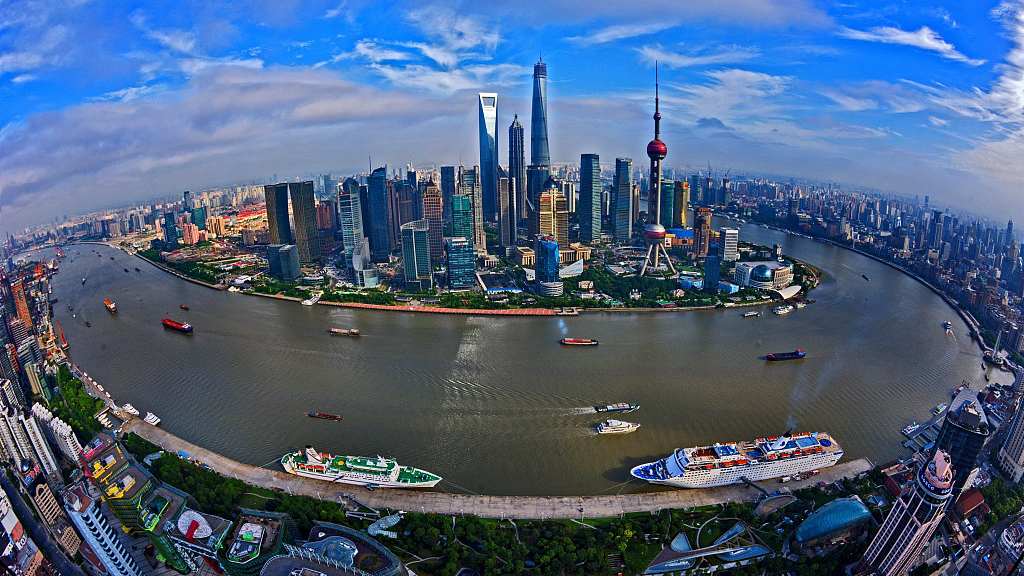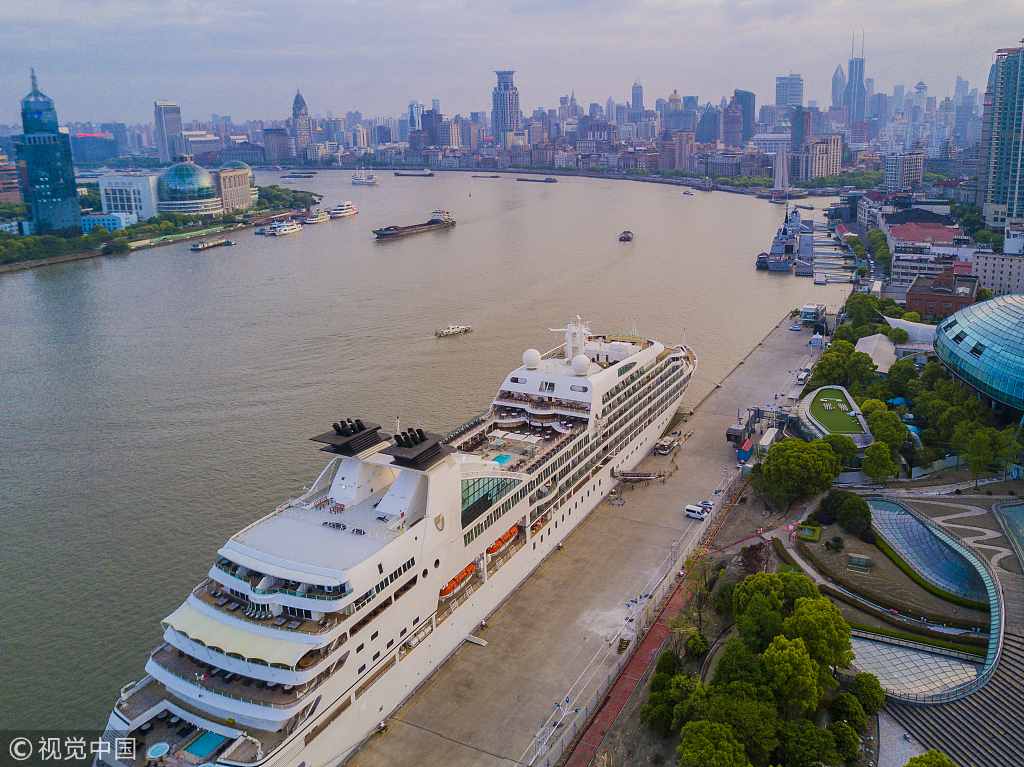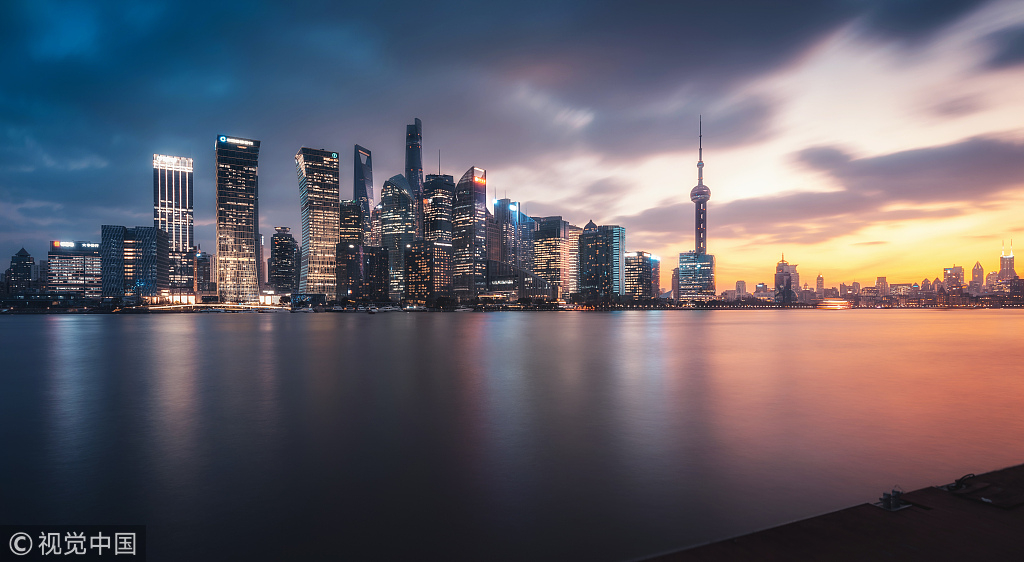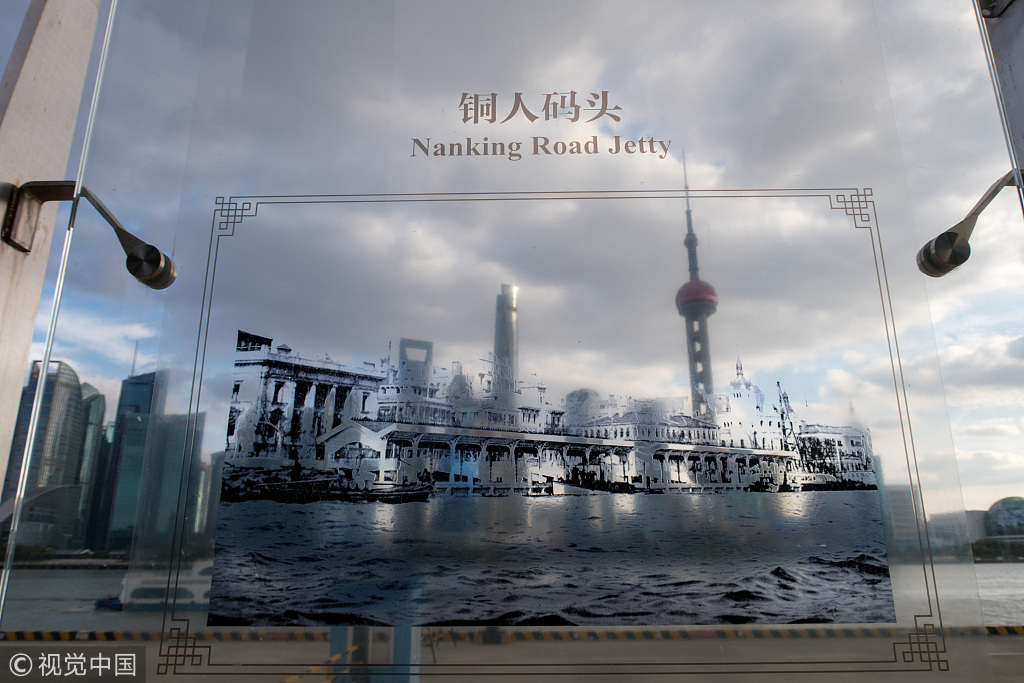
Destination
11:36, 20-Feb-2019
Sailing through time
CGTN

The Shanghai North Bund's storied history has entered a new chapter with the development of a "cruise city" for leisure travelers.
A historical port has become a modern attraction in Shanghai. Some older residents still call the Beiwaitan, or Shanghai North Bund, by its old name, Gaoyanglu wharf.
The North Bund hosted some of China's earliest wharfs, starting from the 1800s. Political figures, such as late premier Zhou Enlai, and overseas students departed from here to such foreign lands as Japan and Europe.
The North Bund's wharfs along the Huangpu River, an estuary of the Yangtze, have remained important to Shanghai's shipping industry, especially exports, over the past 170 years.

An aerial view of the wharf in Shanghai North Bund /VCG Photo
An aerial view of the wharf in Shanghai North Bund /VCG Photo
Briton Hamilton Lindsay is an integral character in the North Bund's story, says historian Xue Liyong, who researches Shanghai's past. "The British didn't know much about Shanghai before his arrival," Xue tells China Tourism News.
Lindsay realized the Shanghai port's strategic importance when he visited there in 1832. Its location in the center of China's coastline made it ideal for cargo transport between the north and the south.
Lindsay's report on his findings contributed to Shanghai's inclusion in the Treaty of Nanking that the British forced China to sign in 1842.
This opened the city to merchants from Britain and, later, other Western nations, such as France, Germany and the United States.

Sunset view from Shanghai North Bund /VCG Photo
Sunset view from Shanghai North Bund /VCG Photo
The British East India Company established China's first foreign-funded wharf, Hongkou (then known as Hongkew) in 1845. It grew to become the largest of its kind in 1853. This kicked off a wave of port construction. Over a dozen foreign wharfs sprang up along the North Bund's shoreline.
Jardine Matheson acquired all of the North Bund's foreign wharfs in 1875 and built the Shanghai and Hongkew Wharf, from which tons of such Western products as textiles, machinery and glass entered China. Chinese tea and raw silk were, in turn, shipped to the West.
The nation's wharfs were nationalized after New China's founding in 1949. The Shanghai and Hongkew Wharf was renamed Gaoyanglu in 1954.
The North Bund today is a passenger, business and leisure hub. The terminal hosts about 60 berths and is the only one on the Huangpu that can receive foreign yachts.

The cultural gallery at the Shanghai North Bund /VCG Photo
The cultural gallery at the Shanghai North Bund /VCG Photo
Shanghai International Port (Group) Co opened a "cruise city" on the site in September 2018. The destination is a national 4A tourism site. (5A is the highest rank.)
The 73,000-square-meter attraction hosts a sightseeing lane and cultural gallery, where visitors can learn about the Huangpu River's history. It also features a music square, port museum and shops.
The cruise city recently installed a high-altitude rope-climbing course that offers spectacular views from above. It hosts 94 challenges of different difficulty levels for visitors ages 4 to 60. There's also a giant swing and bungee jumping.
"The cruise city is an important memory of old Shanghai," says Xu Juehui, a senior official with Shanghai Port International Cruise Terminal Development Co.
"It continues the legacy of the Huangpu River's shipping history."
(Cover: An aerial view of the Huangpu River /VCG Photo)
Source(s): China Daily

SITEMAP
Copyright © 2018 CGTN. Beijing ICP prepared NO.16065310-3
Copyright © 2018 CGTN. Beijing ICP prepared NO.16065310-3